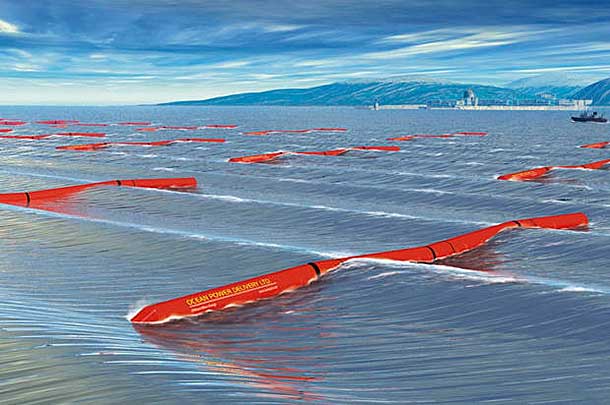Wave power is increasingly becoming popular, gradually gaining momentum. Recently, the US Department of Energy (DOE) announced funding of up to $40 million for the development of the first open-water wave-energy-testing facility in the country.
For several years, wave energy has failed to keep pace with solar and wind energy, partly because harnessing this power source is very complex, involving numerous factors, such as the intervals, height, speed and direction of the swells, as well as more variables that equal higher costs. Generally, wave power requires the installation of costly equipment in a treacherous and corrosive environment, and faces the challenge of energy transmission from offshore to the power grids, scaring away potential investors and making many people believe that it cannot surpass solar and wind power.

However, many other researchers truly see a huge potential in wave power, which is why they are continuing their efforts to refine wave-energy converter systems. According to an Intergovernmental Panel on Climate Change report, the power-generating potential of the oceans around the world exceeds human energy requirements, which entails that there will no longer be the need for nuclear generators, fossil fuels and even solar arrays and wind turbines if wind energy is harnessed to its full potential. Also, nations will no longer rely on foreign countries for energy supply. What’s more, waves are more predictable and consistent than either solar or wind power.
The first few good examples of wave farms include the first commercial wave farm launched in 2008 off the coast of Portugal; the Azura system, which is sponsored by the US Navy and is currently powering a Marine Corps base near Kaneohe Bay in Hawaii; and the first wave farm consisting of multiple units, which was launched in March 2015 in Australia.
Now, in an effort to accelerate innovation of these energy farms and begin widespread commercialization in the US, the DOE has been funneling increased funds into research and development. In 2015, it announced the Wave Energy Prize competition, which is basically a science fair for the most talented wave-energy nerds, with a goal of doubling the output of existing wave-energy converters in the country.
To this point, there are already more than a thousand patents that have been issued for wave-energy converters in North America, as well as in Europe and Asia, with some of the prototypes are sitting off and near shore, which are either constructed on the surface or around 40 meters below sea level. Stating his opinion on the competition, engineering professor at the University of Texas, Spyros A. Kinnas, said, “The main principle is always the same. There’s a rotating portion, like a cylinder, that’s moved by wave action, and there’s a fixed portion. The relative motion of one to the other creates electrical energy that’s carried into the grid by cables.”
According to a DOE spokesperson, the goal is for 80% of the electricity in the country to be generated from clean energy sources by 2035, prompting involved companies to get their wave energy projects into the mainstream.
The question here is whether or not there will be a single industry standard for the technology. Well, according to the CalWave project leader Marcus Lehmann, “I wouldn’t say that. Renewable energy is never going to be a monoculture — it’s always going to be a healthy mix. But our goal is to reduce costs. Our goal is to make it competitive.”
Reference
Leave a Reply
You must be logged in to post a comment.